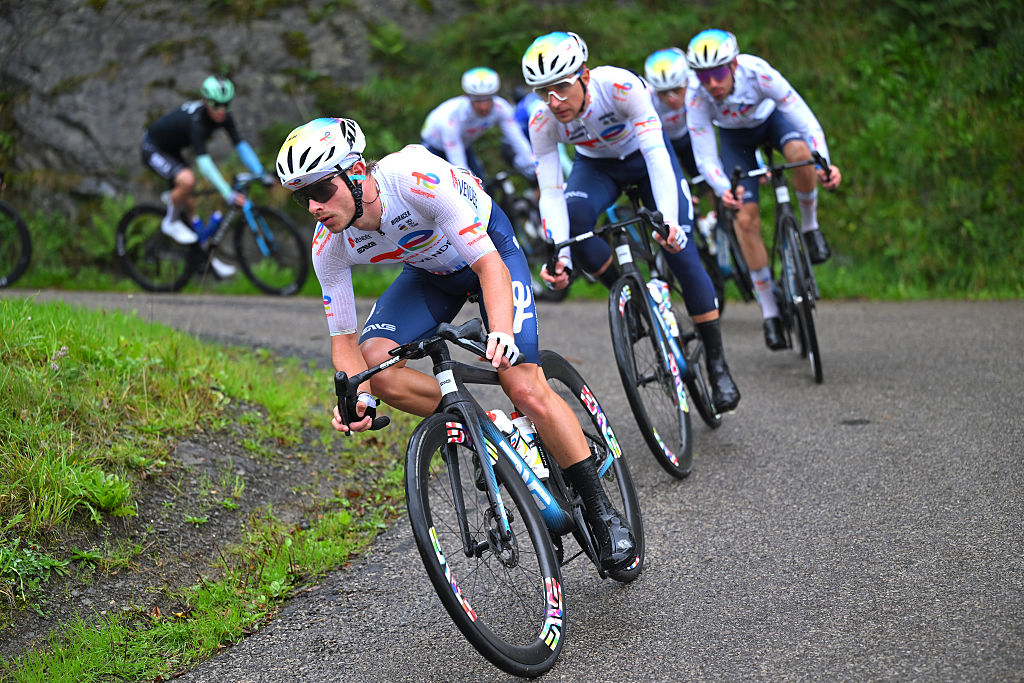How to protect your bike on an indoor trainer this winter
Avoiding the dirt and rain outdoors doesn't mean your bike is immune to needing some TLC
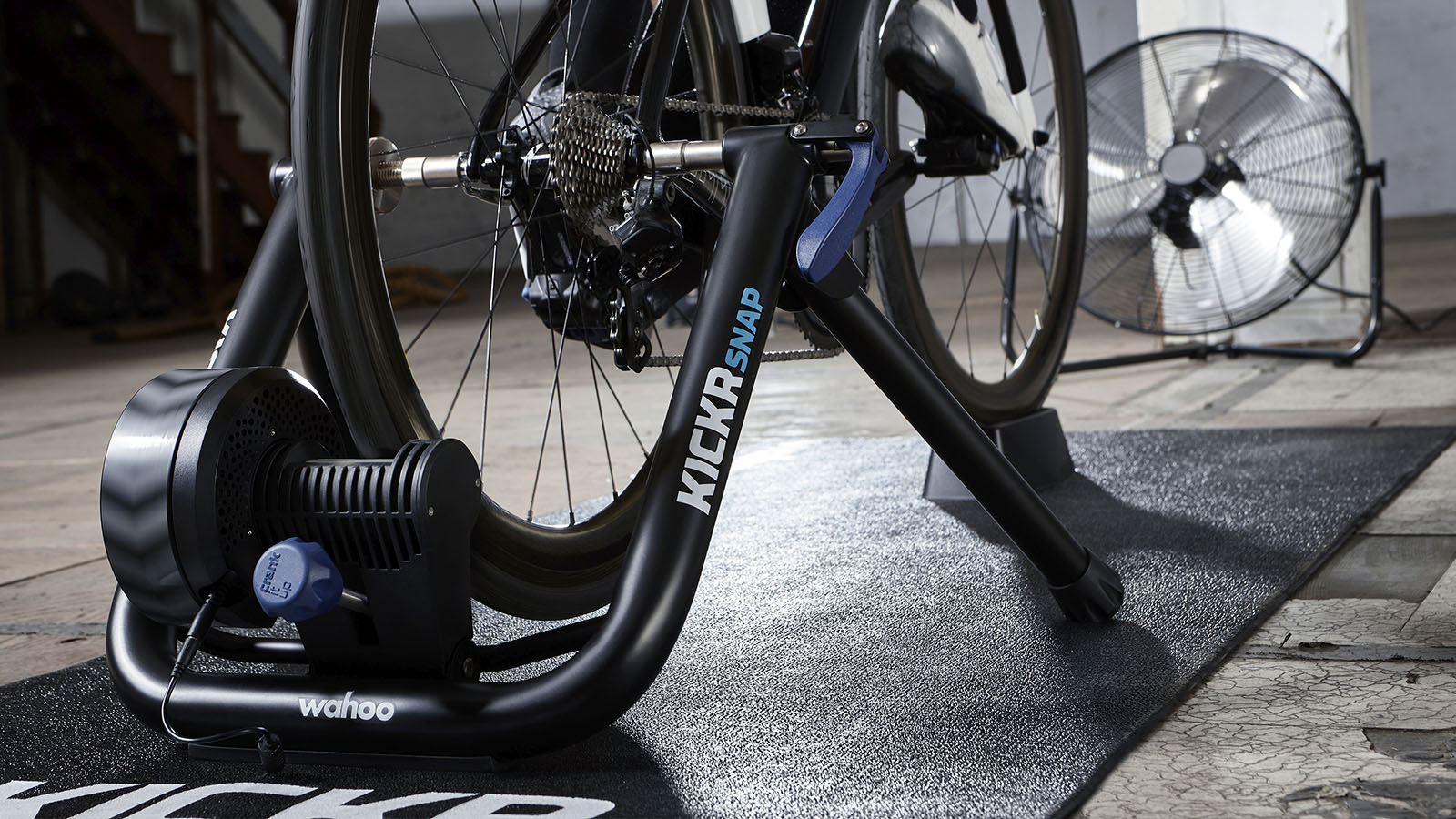

Training indoors is often a way to avoid the wintery weather, where instead of being blasted by winter wind and rain, we can stay inside where it’s warm and dry. But there is a consequence to this: we remove wind chill, we tend to do higher intensity efforts, and we generate a good amount of heat.
This leads to increased sweat rates and humidity levels in a room if airflow is not properly maintained. Sweat is also a corrosive liquid, especially good at eating away at metal over time, the same metal that makes up bolts and components on road bikes. So what can we do to best protect our bikes from this sweat on the trainer?
Fans and dehumidifiers
A way to reduce the amount of sweat making its way onto your components when you're flat out during an effort is to improve the rate at which it evaporates or dissipates. Using a fan means that the sweat can evaporate faster from your skin before it has the chance to drip down onto your bike, and it will also just keep you more comfortable.
A dehumidifier can also reduce the build-up of humidity wherever you are doing your indoor sessions, reducing your sweat rate. Both of these try to reduce the impact of the initial cause of indoor cycling bike damage.
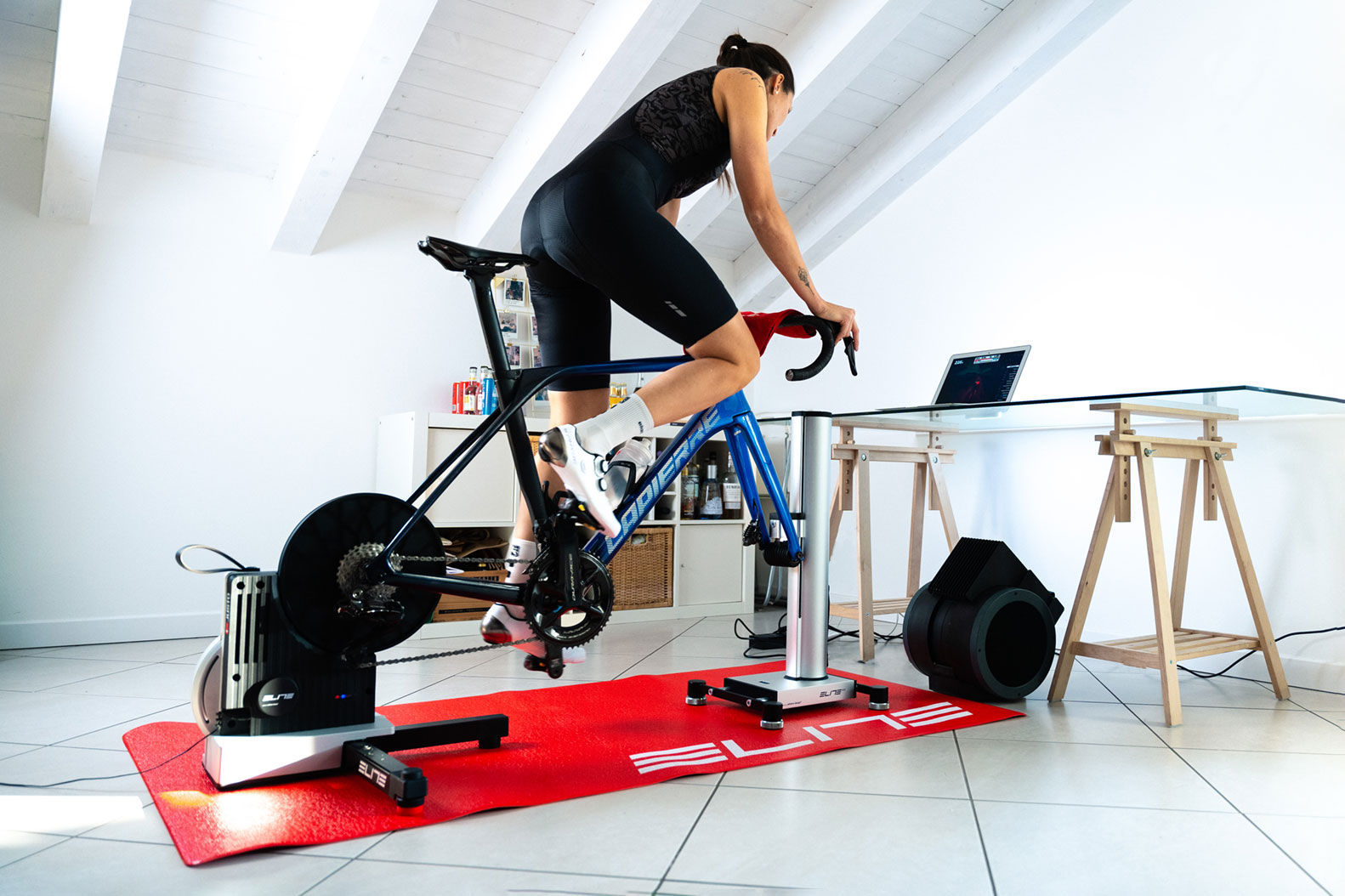
Towels, sweat bands and sweat bibs
Another way to reduce corrosive sweat from reaching components is by putting barriers in place. The most common area on a bike to encounter sweat damage is the handlebars. Firstly, many bikes still use a two-piece bar and a stem, often made of aluminium with alloy bolts keeping them in place. We rest our hands on the handlebars, and our heads sit not too far away from them. As we sweat, this can drip down our forearms onto the bars, as well as falling from our faces onto these component areas.
Fortunately, there are a few things we can do to reduce this. Wearing sweat bands on your wrists or a cycling cap can be a useful way to catch the sweat before it drips down to the bars themselves. You just need to be aware that on long sessions with higher intensity, these can get saturated, as well as potentially warm up your wrists.
Towels, of course, are another option, and almost everyone riding indoors will use one, as you can place these over the bars to provide extra protection, and also use them to wipe sweat down from your face to prevent it from dripping down onto metal components.
The latest race content, interviews, features, reviews and expert buying guides, direct to your inbox!
Finally, turbo bibs are a useful tool. These attach to your handlebars and your seatpost. They are designed to catch sweat as it drips, protecting the entire toptube area and your bars. They narrow in the centre so as not to catch your legs as you are pedalling.
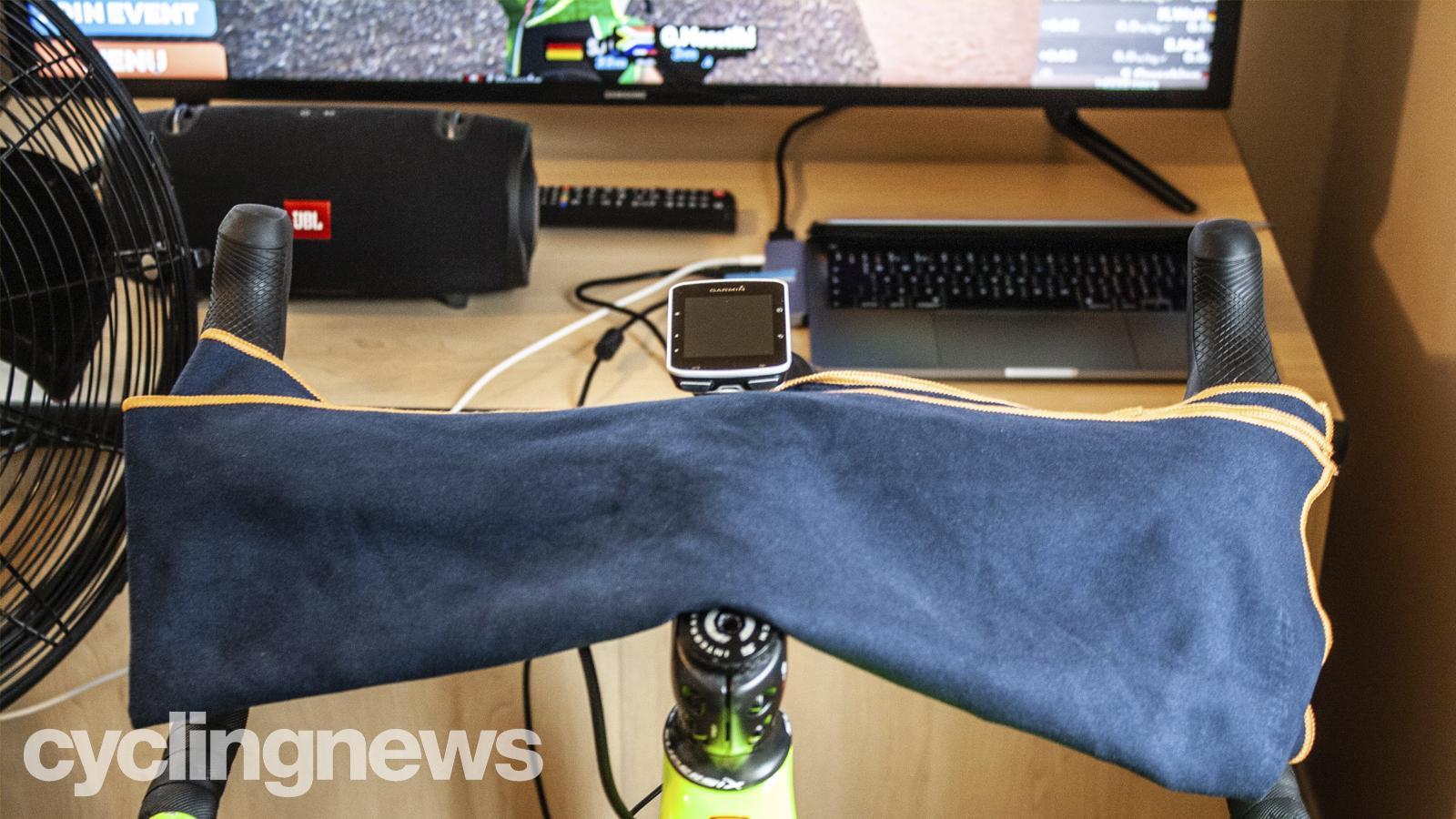
Check bar tape regularly
Beyond this additional protection to stop sweat dripping onto the bars, it is also very important to check your bars regularly. I’ve heard horror stories from mechanics of riders coming in to get their bartape checked on their indoor/outdoor bike, only to find the bars badly corroded in parts and in need of replacement. If this gets too dire, the bars could snap while you are riding, causing serious harm.
This is why it is very important to check your bar tape regularly, as it can get saturated with sweat, salt, and bacteria over time. This then drips down to the bars, where the concentrated salt solution provides the perfect corrosive environment for the bars to degrade. If the bars snap whilst on the trainer, the risk is minimised to an extent; if it happens on the road, it could result in serious injury.
To prevent this from happening, unwrap your bar tape regularly to clean your handlebars, and if the tape is smelling a bit off or feeling a bit tacky inside, best to replace it sooner rather than later.
It's also worth considering just removing your bar tape if you're going to train on one machine all winter, just remove it. This will allow you to easily wipe down and disinfect the bars after each session, and you can then fit new tape in the spring to suit.
If your bars have large salt deposits on them under the tape, replace them. Salt buildup on the bars will likely only happen once damage has already started to be done to them structurally.
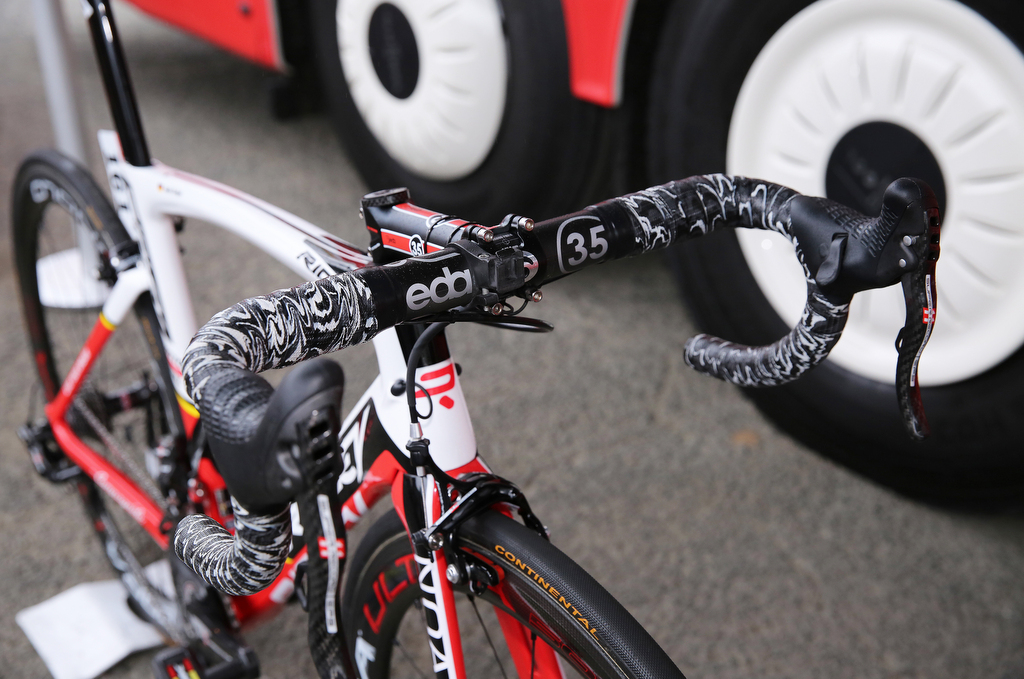
Clean your bike
Following on from cleaning your handlebars, it is good practice to clean your entire bike. Even if you have a bike that is exclusively used indoors, it will still need cleaning. The drivetrain components will require lubricant, as will the bearings in the bottom bracket, but also the indoor trainer itself at the hub. Pedal axles will also need greasing, and the aforementioned sweat around the handlebars may require a headset clean so as to prevent seizing if you do ride that bike outdoors.
Yes, when riding indoors, you are not exposing your bike to road dirt, rain, and mud. But you are still exposing it to dust, just as you should hoover and dust your house, you need to make sure it is not building up on the components of your bike. Especially using liquid lubricants, these are sticky and will attract bits of dust and help it stick to the trainer if used excessively.
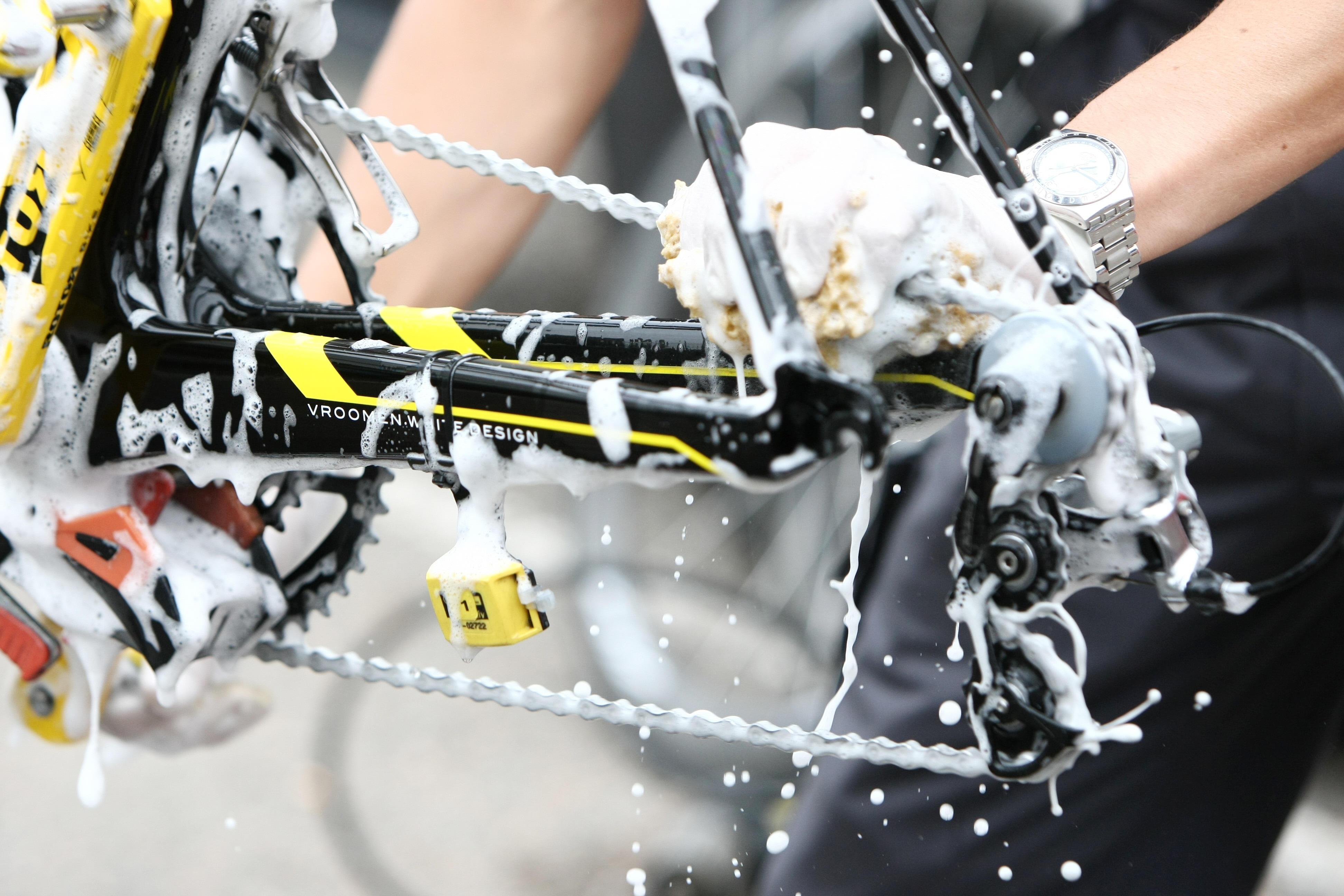
Wax lube
That brings us on to wax lubes. These have been shown to dramatically reduce the rate of wear on chains, in part because the wax forms a protective barrier against dirt, which enters the chain and causes wear once the drivetrain is moving.
The problem with wax is that it tends not to do as well in the rain, but riding indoors removes that problem entirely. This means wax lubricants will last well, and also reduce the chance of dust and dirt sticking to the chain. This will improve drivetrain lifespan significantly over time, and nowadays can be done relatively cheaply with some solvent cleaner and wax drip lube.
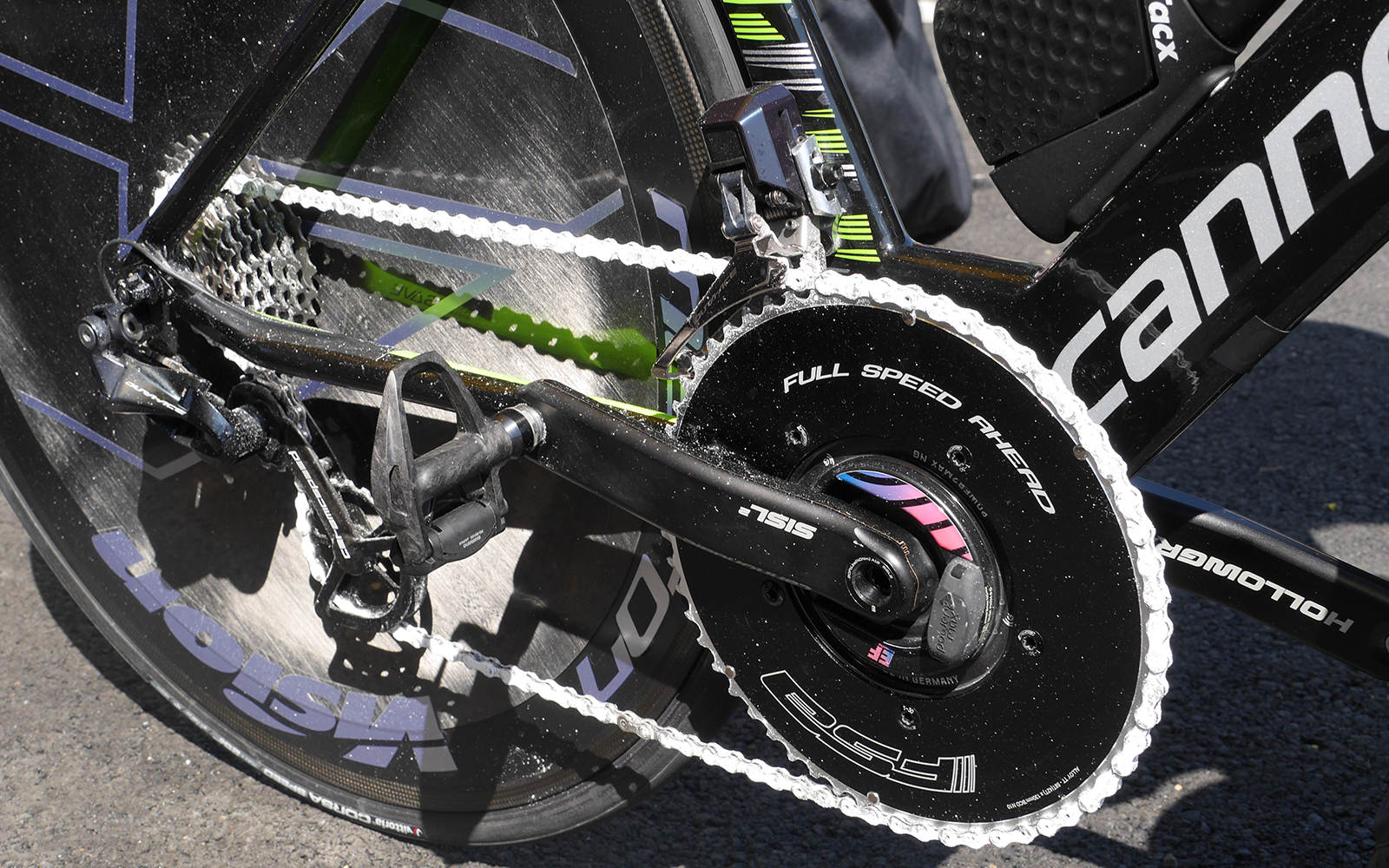

Freelance cycling journalist Andy Turner is a fully qualified sports scientist, cycling coach at ATP Performance, and aerodynamics consultant at Venturi Dynamics. He also spent 3 years racing as a UCI Continental professional and held a British Cycling Elite Race Licence for 7 years. He now enjoys writing fitness and tech related articles, and putting cycling products through their paces for reviews. Predominantly road focussed, he is slowly venturing into the world of gravel too, as many ‘retired’ UCI riders do.
When it comes to cycling equipment, he looks for functionality, a little bit of bling, and ideally aero gains. Style and tradition are secondary, performance is key.
He has raced the Tour of Britain and Volta a Portugal, but nowadays spends his time on the other side of races in the convoy as a DS, coaching riders to race wins themselves, and limiting his riding to Strava hunting, big adventures, and café rides.
You must confirm your public display name before commenting
Please logout and then login again, you will then be prompted to enter your display name.
